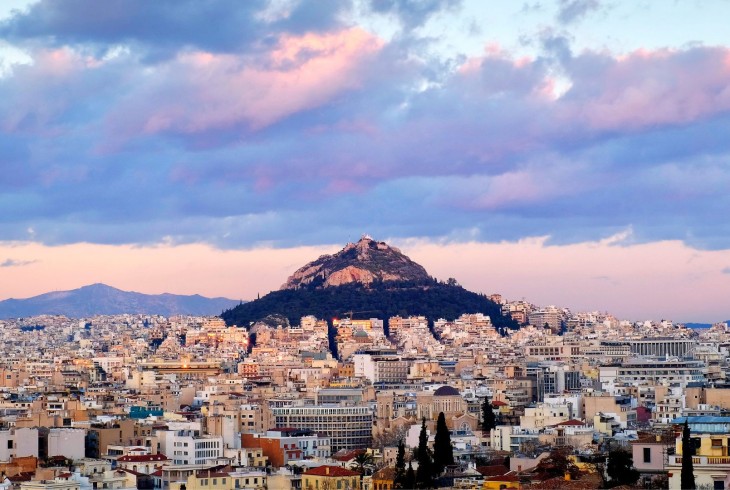Any visitor to Athens will immediately recognize the “crown” of Athens that is the Acropolis. Its prominence is felt from every square, alley, and restaurant-- the whole city can feel like it lives in the shadow of the Acropolis, literally and metaphorically. But as one looks a little further past the Acropolis, it is difficult not to notice that, standing taller and more pronounced a few miles away, is an even more imposing mountain.
This mountain is likely to leave many uninitiated travelers wondering just what is up there, and if it is worth exploring. The short answer is yes. Of all the views of the city, Mount Lycabettus has the best, with sweeping, unhindered views of the entire city stretching out to the Aegean. Perhaps the Acropolis is a more famous view, but there is one drawback to it-- you can’t see the Acropolis. This alone makes Mount Lycabettus a worthy destination. Additionally, Mount Lycabettus has several interesting sites and restaurants worth exploring by any traveler looking for a more “off the beaten path” destination in Athens.
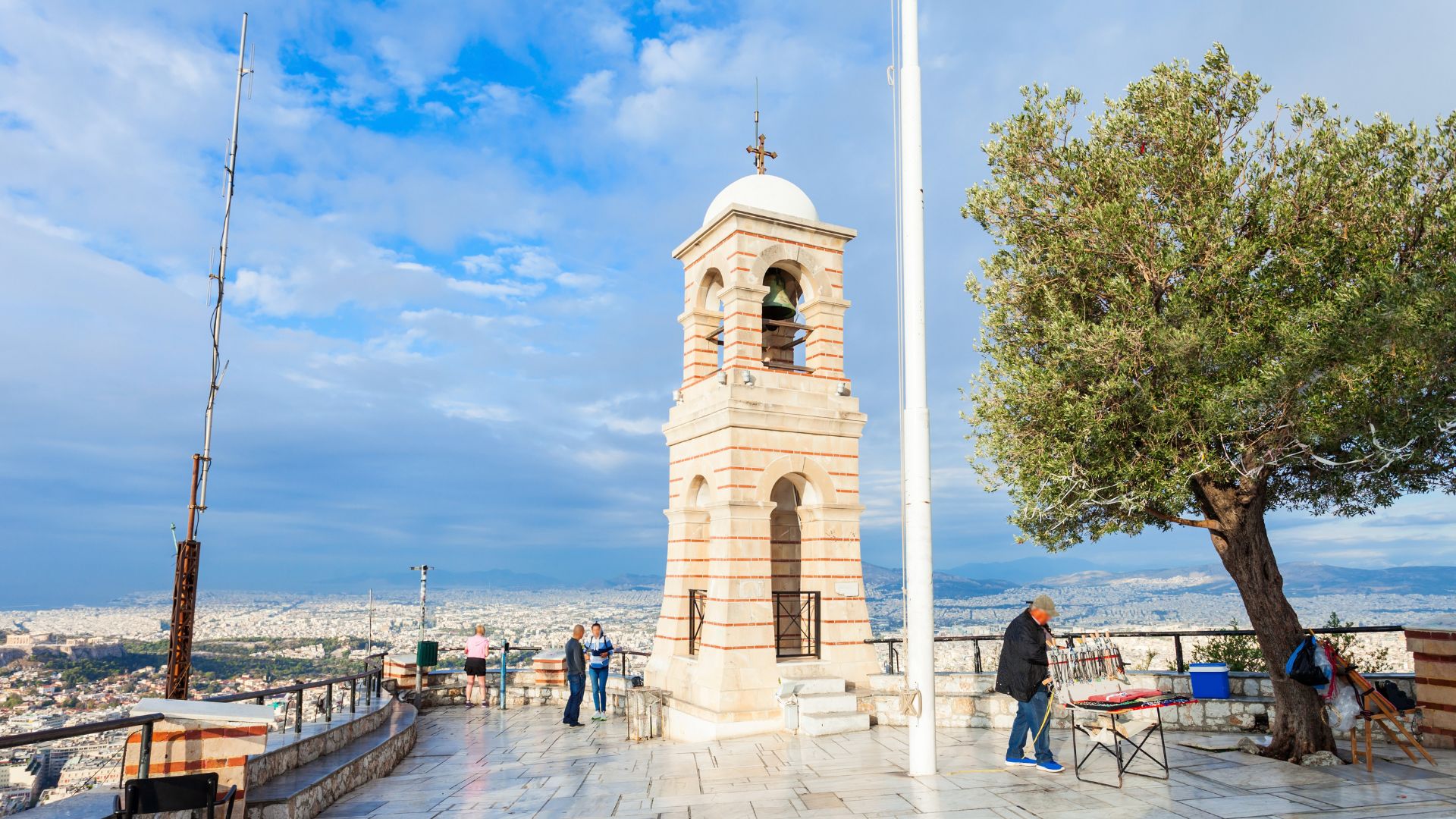
Standing at over 900 feet tall (277 meters), Mount Lycabettus is actually the highest point in the city. The Acropolis, by comparison, is nearly half the height at 490 feet (150m). Surrounding the base is a thicket of pine trees planted during a reforestation process in the late 1800’s, creating a stark contrast with the jagged limestone rock protruding from the top. Naturally one would wonder why it didn’t house similarly important buildings for the ancient city, but as you approach, the reason is immediately clear-- the steep slopes make ascension difficult and inconvenient. This did not stop the Athenians from building a smaller temple to Zeus at the top, but it would remain a comparatively quiet place throughout its history. Additionally, there have been almost no remains of permanent human habitation found on the mountain.
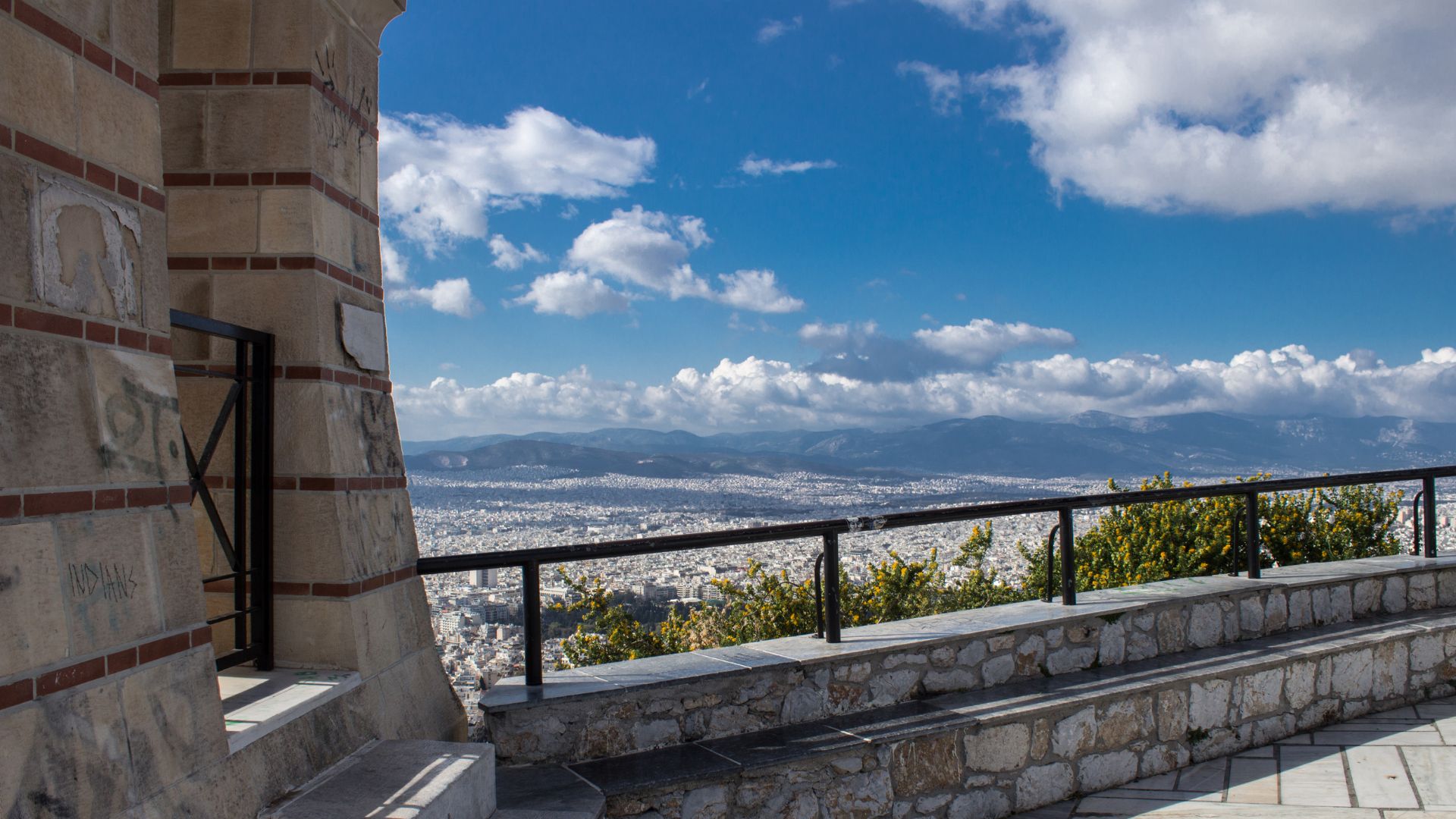
The myth about Mount Lycabettus, like all myths in Athens, has to do with Athena. It is said while in the middle of carrying a chunk of limestone for the construction of the Acropolis, she was informed about the opening of the “box of Erichthonius”-- a box which housed a secret child of hers and one fated to be king one day-- and in surprise, she dropped the mountain of limestone. This myth further develops the relationship the Athenians had with their patron deity, but the mountain itself was formed tens of millions of years ago during the Cretaceous period (when the last dinosaurs roamed the earth). The name likely comes from “lycos”, which means “wolf” in Greek, and the full name roughly translates to “the hill that is walked by wolves.”
Getting to the top today is an easy 3 minute ride through a tunnel on the Lycabettus Funicular. Once on the top, you will find a chapel to St. George, who according to tradition was ethnically Greek. Though there are many conflicting origin stories for St. George, most of the core of his story is the same: George was a soldier for the Roman army and part of the Praetorian Guard for the emperor Diocletian. Because of his Christian faith and how they conflicted with his duties, Diocletian would have him beheaded in 303 AD. St. George would go on to be one of the most important saints in the early Christian church, and would be venerated by both the Catholics and the Eastern Orthodox. His popularity would even grow to such a point that he would be venerated in Islam as well. The mythological tale depicting him defeating a dragon would be carried by crusaders in the 12th and 13th centuries back to England, and his popularity in medieval times would make him the patron saint of England. The chapel here is a small, whitewashed one built on the top of the ancient temple to Zeus in the year 1870.
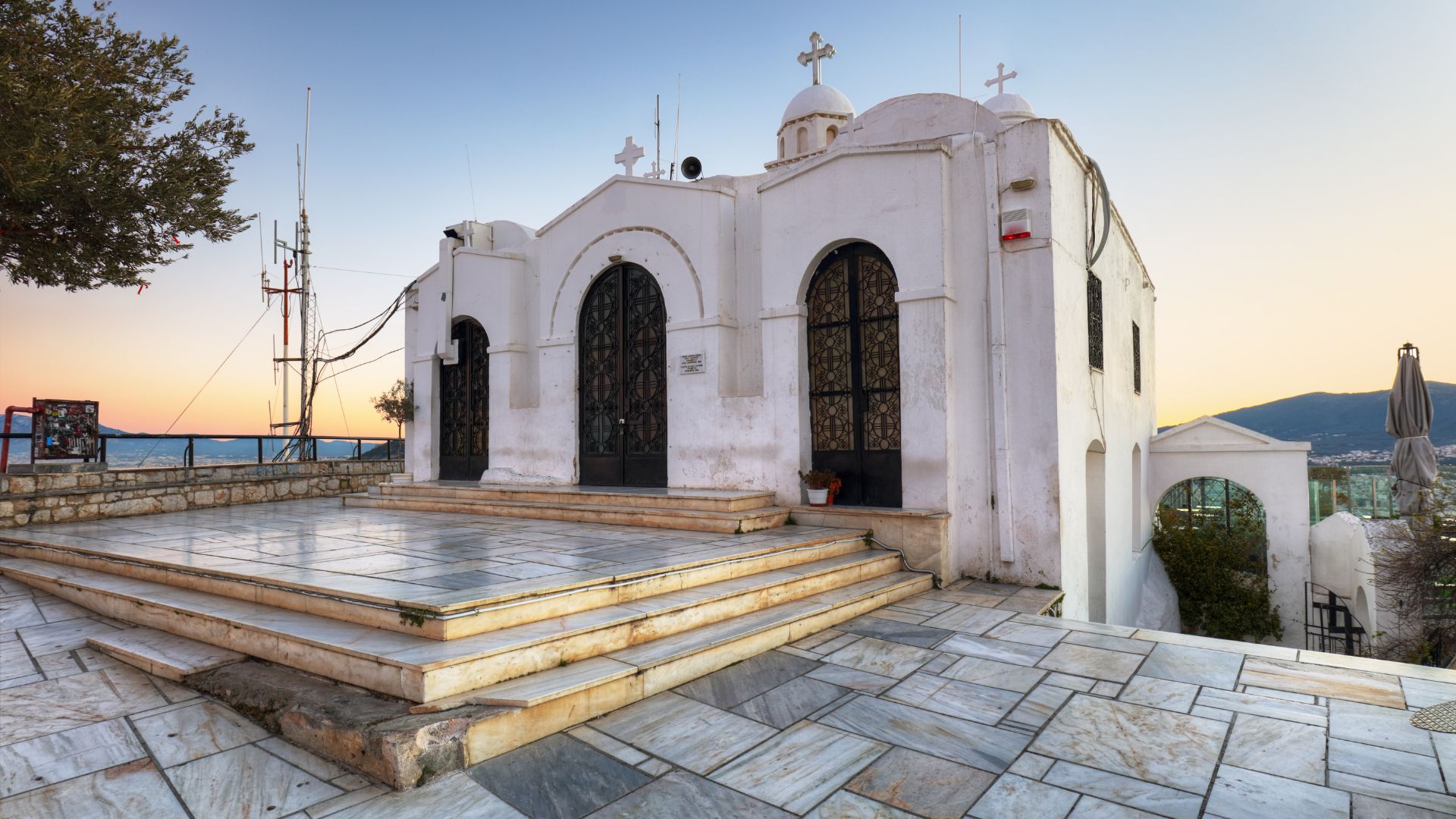
Nearby are several restaurants, where one can enjoy a glass of wine while watching the sun set. The more upscale Orizontes Restaurant requires reservations, but boasts spectacular views of the city, and is the perfect spot to watch the lights of the Acropolis come on as twilight descends. For those looking for a more moderately priced and less formal meal, the nearby Sky Bar is a good alternative.
The last major structure on the top of the mountain is the Theater of Lycabettus. This theater was built in 1965 and feels like a more modern version of the famous ancient Greek amphitheaters found around the Acropolis. Through the years, this theater has featured performances by everyone from Bob Dylan, Ray Charles, Joan Baez, and Leonard Cohen, to Radiohead, Slipknot, Iron Maiden, and Bjork. In 2008 the theater shut down due to safety concerns, but recently it has been undergoing a series of renovations, with plans to reopen sometime in 2023 or 2024.
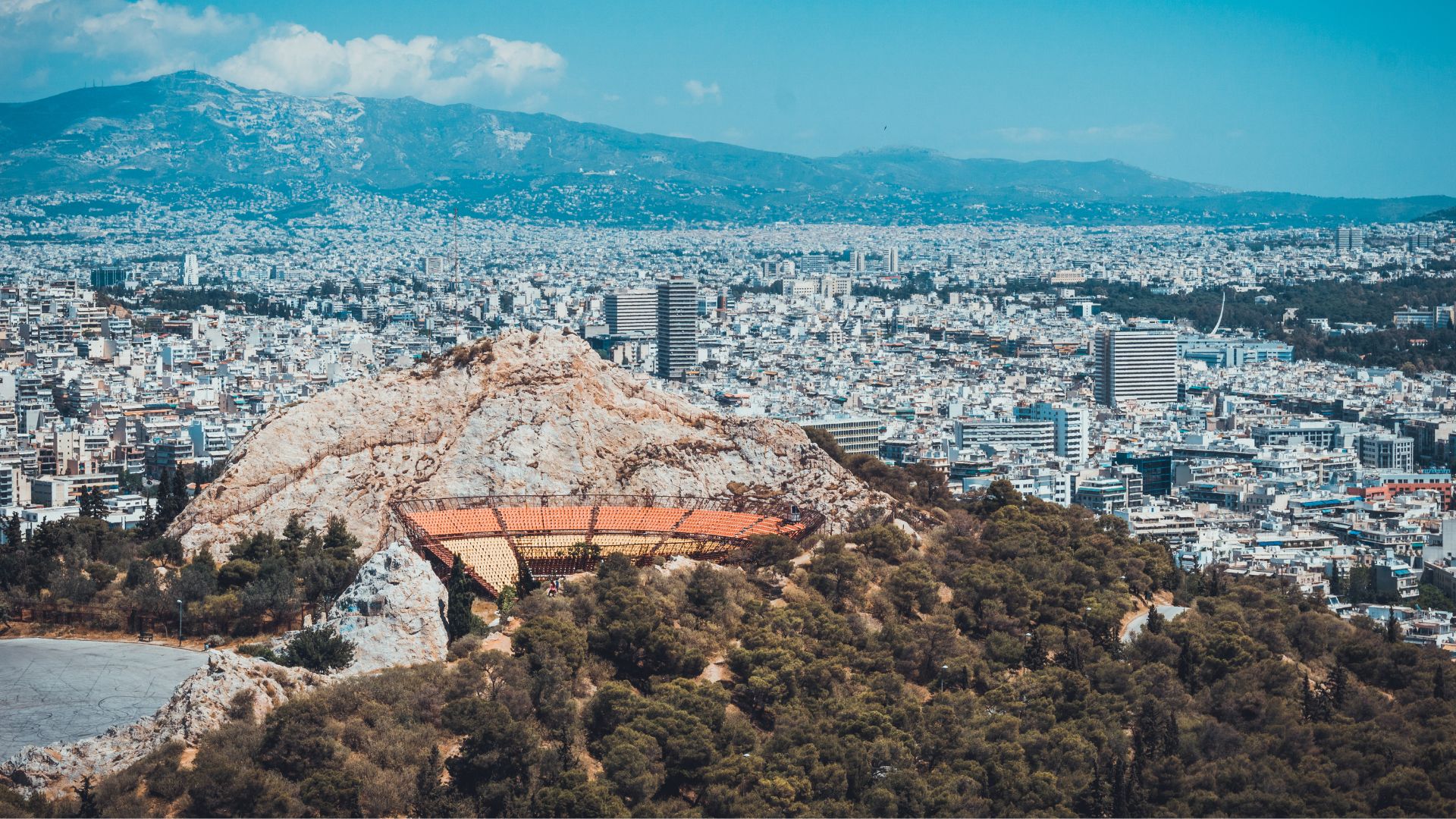
Though Mount Lycabettus was never inhabited, the same cannot be said for the area around its base: the neighborhood known as Kolonaki. In the early 20th century, this neighborhood was one of the wealthiest in the city. But as that wealth retreated to the suburbs as the century wore on, artists, fashionistas, and musicians would take up residency, converting the neighborhood into one of the most vibrant and hip areas in Athens. This is a great destination to visit either before or after going to the top of Mount Lycabettus. There are a wide array of restaurants and cafes to dine at, upscale shopping akin to what can be found in New York City’s SoHo neighborhood or Paris’ Le Marais.

While here, check out the Platia Dexameni, named after the ancient Roman cistern built beneath it by the emperor Hadrian in the first half of the 2nd century AD. You will find this lively square perfect for people watching while enjoying some delicious souvlaki or baklava.

Last but not least, the area is home to some of the best private art collections and museums in Athens. The Benaki Museum, Goulandris Museum of Cycladic Art, Museum of the History of Greek Costume, and the Theater Museum all in the neighborhood. And just a few blocks away, you will also find the Byzantine Museum and War Museum of Athens. To take all of it in is to truly understand the rich character that is Athens.
